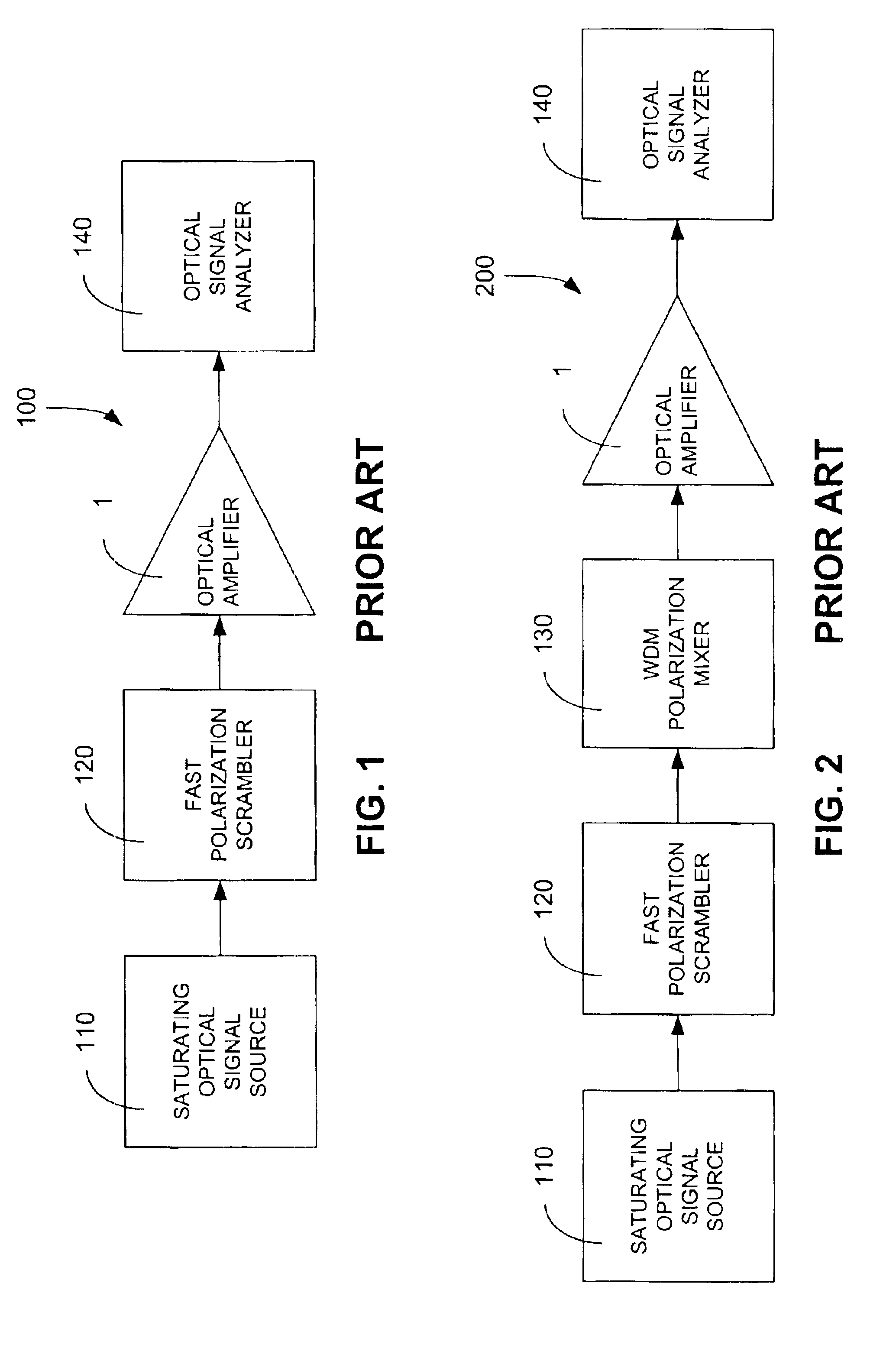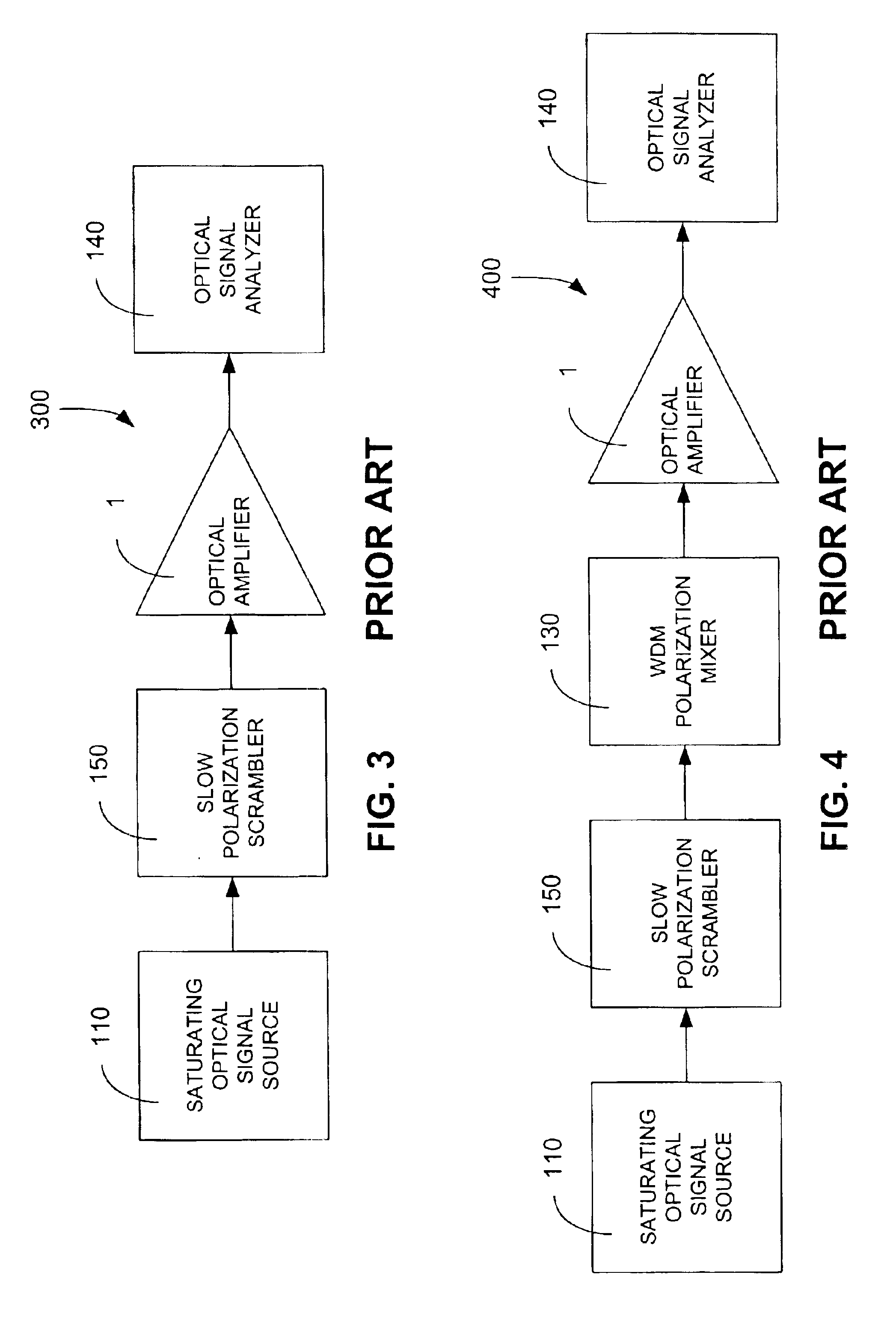System and method for measuring polarization dependent gain of an optical amplifier
a technology of optical amplifiers and polarization dependent gain, which is applied in the direction of electromagnetic transmission, transmission monitoring, instruments, etc., can solve the problem of reducing the effect of polarization dependent loss, and achieve the effect of effective measuring the polarization dependent gain of an optical amplifier
- Summary
- Abstract
- Description
- Claims
- Application Information
AI Technical Summary
Benefits of technology
Problems solved by technology
Method used
Image
Examples
Embodiment Construction
[0023]Embodiments of the invention, a first and second improved optical amplifier test systems 500 and 600, are shown in FIG. 5 and FIG. 6. These improved test systems 500, 600 utilize essentially the same components as the third and fourth optical amplifier test systems 300, 400 of FIG. 3 and FIG. 4, but with at least one major enhancement, to be discussed below. First, a saturating signal source 110 generates an optical signal that will saturate the optical amplifier 1. Saturation, whereby the intensity level of the input signal is high enough so that small changes in the input signal of the optical amplifier 1 result in essentially no change in the intensity level of the output signal, is the normal operating condition of the optical amplifier. Dependent upon whether single-channel or multiple-channel tests are desired, the saturating signal source 110 may be either a single channel or WDM source.
[0024]As previously discussed in FIG. 3 and FIG. 4, a slow polarization scrambler 15...
PUM
 Login to View More
Login to View More Abstract
Description
Claims
Application Information
 Login to View More
Login to View More - R&D
- Intellectual Property
- Life Sciences
- Materials
- Tech Scout
- Unparalleled Data Quality
- Higher Quality Content
- 60% Fewer Hallucinations
Browse by: Latest US Patents, China's latest patents, Technical Efficacy Thesaurus, Application Domain, Technology Topic, Popular Technical Reports.
© 2025 PatSnap. All rights reserved.Legal|Privacy policy|Modern Slavery Act Transparency Statement|Sitemap|About US| Contact US: help@patsnap.com



